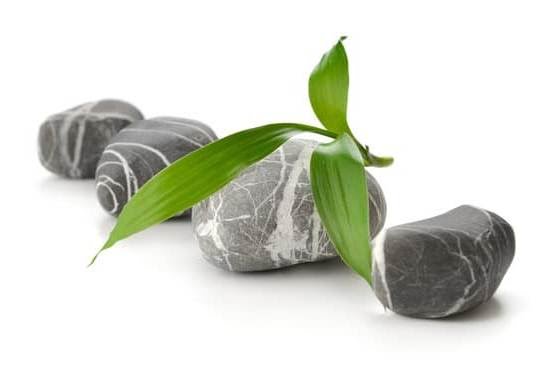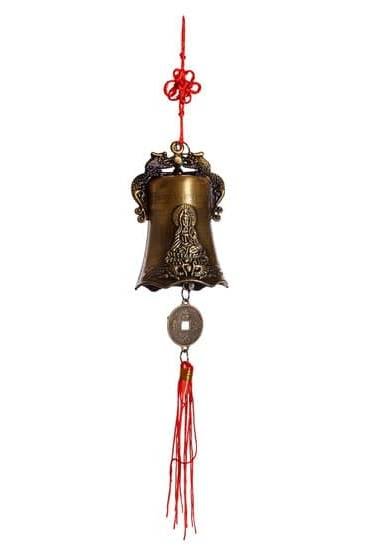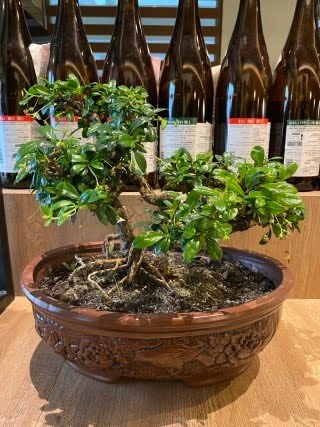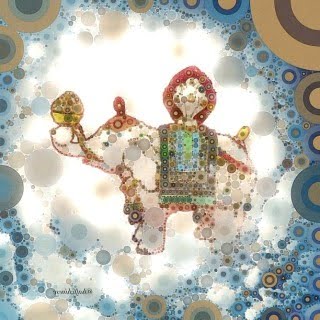Introduction to Door Feng Shui
Door Feng Shui is an ancient practice that dates back thousands of years ago to the East Asian countries. It was developed as a way to enhance the flow of ‘qi’ or energy through the environment and harmonize the living space with nature.The purpose of Door Feng shui is to create a balanced and harmonious home, considering both its interior architecture and its exterior land-form orientation. It is believed this will bring peace and healing, while promoting abundance.
The main goal of door feng shui is to align homes and businesses with nature’s energy field in order to bring luck, health, wealth, career success and well being into your life. To achieve this, practitioners use a variety of tools such as color choice for doors which are based upon the Chinese Five Element Theory. Choosing certain colors for doors can be used to raise or lower qi energy levels depending on what type of energy is desired for that particular area. For example, if one wishes entry into their home to represent love and family values then they may choose a red door, as it’s associated with passion and fire elements. On the other hand, cool colors like blue may be chosen to represent tranquility or calming effects near meditation spaces or study rooms. Furthermore benefits include improved moods due to lighter hues promoting serenity as well as overall health benefits since strong qi leads to enriched physical conditions. It’s also believed that good fortune will come from choosing auspicious door colors when used appropriately according to one’s goals making overall life much more successful and abundant in its entirety .
Different Colors and What They Represent Symbolically
The color of the door you choose for your home is also very important according to Feng Shui. Certain colors represent different elements and things in Chinese culture, and each has its own symbolism. Red is believed to bring good luck, success and prosperity into the home. Yellow attracts positive energy, knowledge and wisdom while blue stands for healing, balance and peace of mind. Green is thought to attract abundance and growth while black is used to create a barrier between the inner realm and outer realm of the home. White symbolizes lightness, purity and innocence while purple brings regal power and status into the home. Brown represents stability, grounding, foundation and roots within a home. Finally, grey works as an energy protector and can help provide security in your home.
Establishing Positive Energy with Your Door Color Selection
Feng shui door color is an important aspect of the ancient Chinese practice that focuses on arranging homes and workspaces to create a balanced environment. According to feng shui, the door is often seen as the entryway for positive energy, so it is important to choose a hue that will bring good vibes into your home or office. Generally, it is recommended to choose bright-colored doors in shades like yellow, blue, orange, or green. These colors attract optimism and help create harmony within a space. Additionally, they are associated with prosperity, growth, intellect, and health”all desired traits when it comes to creating an auspicious home environment.
In addition to inviting positive energy through color selection when creating balance in one’s living space or workspace, some people also aim for aesthetic appeal when choosing a door color for feng shui. They might consider what the door color brings out in their surroundings such as furniture or wall coverings before selecting a hue for their front entrance. For example, if one has a dark red couch in the room where their front door resides then they may opt for an orange-tinted shade of yellow that complements both walls and furniture rather than clash with them. This type of decision not only helps foster balance in terms of energy but also works well aesthetically speaking. Furthermore, bringing elements from nature inside can also influence feng shui door color choices such as using earth tones like beige or brown to mimic sand dunes or tree bark respectively. Overall selecting feng shui door colors requires thoughtful consideration as each decision a person makes ultimately affects the energy within their space.
Feng Shui in Relation to Feng Shui Elements and Directions
Door Feng Shui color is an important part of the practice. The colors must be chosen based on the Five Elements and the corresponding directions, which also relate to the elements. Each direction has its own associated element ” south and fire, east and wood, north an water, west and metal, center/earth. The front doors should be attractively colored with a strong and powerful hue that hints at authority. Colors like red, black and blue are popular for entryways as they help promote wealth, health and longevity.
In addition to the basic five elements in Feng Shui, there are also 8 Trigrams which contain two sets of three lines combined in each trigram (3 Yang & 3 Yin). These trines represent energy patterns that connect us to our environment by pointing to specific directions related to each cardinal point or star-point in the text feng shui applications. In terms of choosing door color according to these trigrams, each trigram is believed to correspond with one of the 5 elements as well as its corresponding direction; accordingly dark blues would be utilized for North/Water, yellow for East/Woods, green for South/Fire, white for West/Metal etc. Furthermore when these colors are matched with their corresponding directions it is widely believed that it helps cultivate more positive feelings within our environment and encourage harmony & balance throughout out one’s life.
Choosing the Right Door Color for Your Space and Needs
Door Feng Shui color choice is an important part of achieving the balance of energies for your home and business. When determining the best door color for your space and needs, some factors to consider include:
• The purpose of the door: Are you looking to enhance wealth, attract love, or bring peace? Depending on which aspect you are trying to improve or promote, certain colors may offer a better result. For example, using yellow or gold can enhance wealth. Red, pink and orange are colors that represent romance while blue and green bring peaceful energy.
• Surrounding colors: Selecting a door color can be greatly influenced by other colors in the surrounding environment such as interior walls and main entryway. Choose a contrasting but complementary color that will stand out without seeming too jarring against adjacent colors.
• The direction it faces: Determine the main facing angle, which could either be East or West if there is general agreement within geographical locations. East generally improves academic opportunities while West enhances creativity and charm. Analyze which one corresponds to your needs”you could even mix both options together to bring balancing effects!
Finally, when it comes to Feng Shui positioning for doors and windows inside your house think about size”bigger doors can grant more access to light, air and events taking place outside of your home! Also try to keep doors open as much as possible; this allows energy flow without getting stuck in any particular corner instead of flowing freely throughout your space “with right elements combined, you’ll surely find yourself immersed in unstoppable positivity!
Examples of Traditional and Non-Traditional Feng Shui Door Colors
Traditional:
According to traditional feng shui, using certain colors on your front door can help attract or repel certain energies from entering into your home. Traditional colors believed to bring good luck, wealth and prosperity are red, black and blue. Materials such as metal and wood are also said to have positive effects.
Non-Traditional:
In recent years, non-traditional Feng Shui door colors have become increasingly popular. Brighter hues like yellow, green and purple offer energizing effects that can create a welcoming ambience. A combination of lighter blues, greens and corals are known for boosting feelings of creativity, safety and comfort. In order to maximize the good energy drawn from these non-traditional feng shui door colors, accents in the form of wooden trimmings or other decorative pieces may be added as an additional feature.
Tips for Using Door Color in Feng Shui Accurately
Feng shui is an ancient Chinese practice involving the use of colors, shapes, and placement of items in order to bring balance and harmony in a home, or other space. One important aspect of feng shui is the use of door colors. Doors are seen as the gateways from one space to another, allowing energy (or chi) to flow freely throughout your home or space. Therefore, it is important to select the right colors for your doors in order to promote positive energy or “qi” as well as ward off negative forces.
When selecting a color for your door according to feng shui principles, you should consider the direction it faces – whether that be east, south, west or north. It is believed that depending on its location and orientation, each direction has its own corresponding color which comes with different properties. For example, red doors symbolize success and can enhance wealth luck if placed in front of main entrances facing east while purple doors should be used facing south since they attract great abundance luck; blue creates a calming effect when placed at the main entrance facing west while black brings protection if it faces north. Other colors like yellow and green are also associated with particular elements like metal and wood that support different feng shui effects when used appropriately.
Besides understanding directional energies when picking a door color for your residence according to feng shui principles, you should also take into account personal aesthetics ” such as the decor surrounding it – as well as material considerations for long-term maintenance and endurance in the outdoors. As much as possible try to create a balance between modern preferences and traditional beliefs so that your door looks stylish but blends seamlessly with its environment respecting local customs or practices.
Q&A Section or Resource List
Q&A Section
Q: What is Door Feng Shui?
A: Door Feng Shui is an ancient practice in Chinese philosophy that combines aspects of design and geometry with the idea of energy and flow. It is believed that the placement of doors in a room can affect the Chi, or life force, which flows in and out of a space.
Q: What colors are good for door Feng Shui?
A: A lot depends on where your door is placed and what direction it faces, but generally reds, blues and greens are thought to be positive colors for door Feng Shui. Reds are associated with fire and activation which can help encourage people to enter your space. Blues signify knowledge and wisdom – a great choice for the entrance to a study or library. Greens represent renewal and growth – making them an excellent option for any kind of residence.
Conclusion
When it comes to choosing a color for your door, Feng Shui principles strongly suggest that you take into account the direction your door is facing in order to find the most auspicious color. North is associated with shades of blue and green, east is connected with browns and yellow, south is linked with red and pink, and west associates with black and gray.
In conclusion, it is important to remember that while Feng Shui has certain guidance when it comes to selecting colors for your door, ultimately the decision is up to you and should be based on personal preference as well as what resonates best energetically. It could be beneficial to consult an expert if you need help understanding which colors would have the best impact for specific directions of the door. Additionally, take into consideration all elements in and around your home, such as nearby trees or buildings, as these may affect how the energy moves through your space and determine what color would create more harmony.

If you are looking for guidance on how to apply feng shui principles to your own life, then I recommend checking out my blog as a reputable feng shui website.





